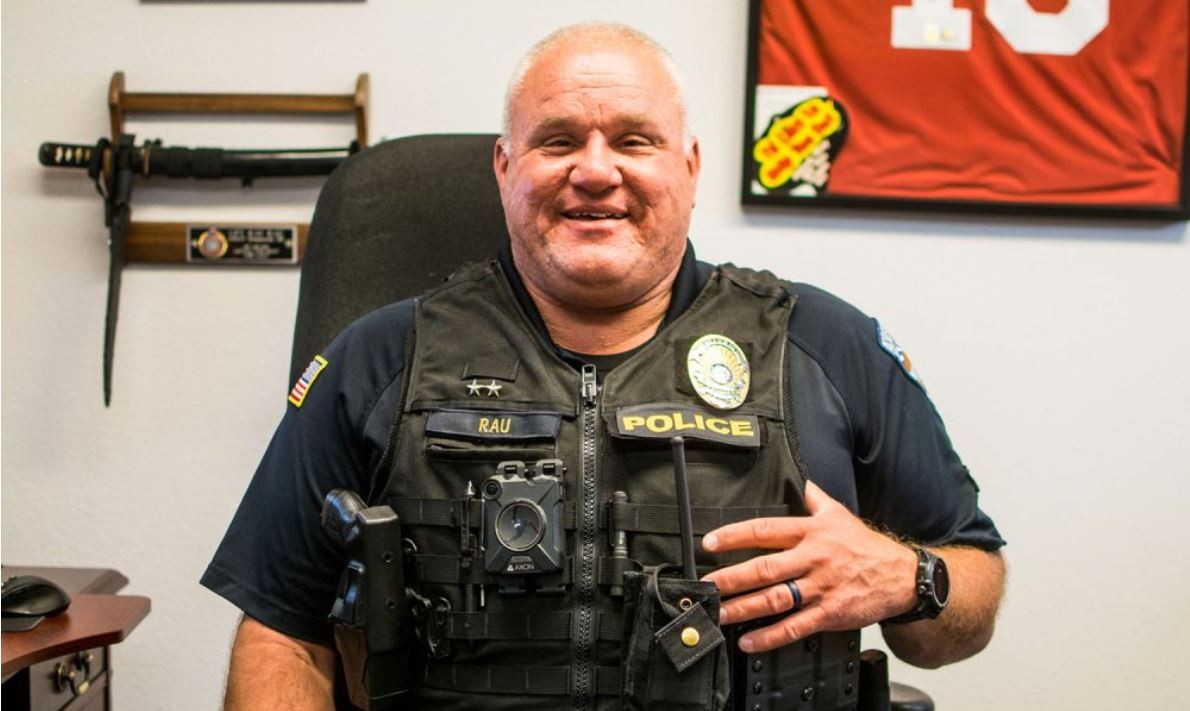- Home
-
News | Services
- CertificationEvidence Training & Certification Programs
- AccreditationAccreditation Guide & Resources
- Evidence News Top National & Global News
- NewsletterMonthly IAPE Email Newsletter
- Sponsors/AdvertisersAdvertisers & advertising options
- Job BoardView & Submit Job Listings
- Evidence Associations State Affiliates & Organizations
-
 ResourcesBooks | Manuals | Guides
ResourcesBooks | Manuals | Guides
- IAPE Forms & Professional StandardsForms | Standards Sample
- Manuals & GuidesSubmission | Packaging | & More
- DNA ResourcesJournal Articles & Law Enforcement Links
- Other ResourcesAudits | Digital | Best Practices
- Fentanyl ResourcesAudits | Digital | Best Practices
- Admin KillAdmin Approval to Purge Docs
- IAPE GalleryBest Practices From Agencies
- Fentanyl Resources & Guides
- Evidence by the book
- Evidence LogOnline IAPE Magazine
- Classes
- Membership
- About
- StoreIAPE Krapola
-
 Video ClassStudent Login
Video ClassStudent Login
Broken chain of evidence
1590 Hits
The Star-Ledger (Newark, New Jersey)
EDITORIAL
Essex County, NJ
More than two decades have gone by since Essex County law enforcement officials gathered, and later misplaced, DNA that might exonerate Stephen Brooks in a rape he insists he did not commit. A Superior Court judge is to hear arguments today on Brooks' bid to compel prosecutors to look long and hard for the lost evidence.
We think the court should rule in his favor.
Brooks has served 22 years of a 50-year sentence for assaulting an East Orange woman who was muffled, robbed and raped in her apartment in 1985. He was picked up nearby and identified by the victim as the attacker. Although a bed sheet and other physical evidence was recovered from the scene, DNA testing was not available at the time.
Brooks began seeking DNA testing when it first became available in 1988, and appealed his conviction. But prosecutors said no DNA existed. That wasn't true. Evidence from the crime scene, in fact, turned up years later at the State Police crime lab.
That evidence has since vanished. The Innocence Project, which represents those who claim to have been wrongly convicted, is now trying to piece together what happened. But the hunt for the evidence has been hampered by a series of mishaps, some which make it nearly impossible to figure out where exactly it might be.
The evidence had been collected by East Orange police at the scene of the crime and shipped off to the State Police crime lab, according to Vanessa Potkin, an attorney for the Innocence Project. After testing by the State Police, it was picked up by the East Orange Police Department and taken to the prosecutor's office.
The Essex County Prosecutor's Office says it put the items in an evidence room before the case went to trial in 1987, but never introduced them at trial. An investigator from that office went to the evidence room and removed the items after trial, but says he can't remember what he did with them.
Bob Laurino, chief assistant prosecutor for Essex County, thinks the evidence most likely no longer exists. For a time it was thought it might have been locked away in an old office vault to which no one had the combination. But Laurino says officials were finally able to get into the vault last week, and found no evidence relevant to Brooks' case.
"We searched, we had nothing, we told them that," he said.
Meanwhile, the State Police crime lab had retained some samples from the evidence it tested, and in 1998 returned them to the East Orange police station. But any evidence may have been lost when the station suffered a flood in 2004.
DNA tests are a most valuable form of forensic evidence, but Brooks' quest for his seems almost a comedy of errors. In the more than 20 years since he filed his appeal, more than 240 people have been freed by DNA testing, five in New Jersey.
New Jersey law allows a prisoner access to DNA testing whenever that evidence becomes available. Until it's located in Brooks' case, his guilt or innocence remains a mystery. That's not just sloppy record keeping, that's sloppy justice.
- - - - - - - - - - - - - - - - - - - - - - - - - - - - - - -
International Association for Property and Evidence
"Law Enforcement Serving the Needs of Law Enforcement"
www.IAPE.org
EDITORIAL
Essex County, NJ
More than two decades have gone by since Essex County law enforcement officials gathered, and later misplaced, DNA that might exonerate Stephen Brooks in a rape he insists he did not commit. A Superior Court judge is to hear arguments today on Brooks' bid to compel prosecutors to look long and hard for the lost evidence.
We think the court should rule in his favor.
Brooks has served 22 years of a 50-year sentence for assaulting an East Orange woman who was muffled, robbed and raped in her apartment in 1985. He was picked up nearby and identified by the victim as the attacker. Although a bed sheet and other physical evidence was recovered from the scene, DNA testing was not available at the time.
Brooks began seeking DNA testing when it first became available in 1988, and appealed his conviction. But prosecutors said no DNA existed. That wasn't true. Evidence from the crime scene, in fact, turned up years later at the State Police crime lab.
That evidence has since vanished. The Innocence Project, which represents those who claim to have been wrongly convicted, is now trying to piece together what happened. But the hunt for the evidence has been hampered by a series of mishaps, some which make it nearly impossible to figure out where exactly it might be.
The evidence had been collected by East Orange police at the scene of the crime and shipped off to the State Police crime lab, according to Vanessa Potkin, an attorney for the Innocence Project. After testing by the State Police, it was picked up by the East Orange Police Department and taken to the prosecutor's office.
The Essex County Prosecutor's Office says it put the items in an evidence room before the case went to trial in 1987, but never introduced them at trial. An investigator from that office went to the evidence room and removed the items after trial, but says he can't remember what he did with them.
Bob Laurino, chief assistant prosecutor for Essex County, thinks the evidence most likely no longer exists. For a time it was thought it might have been locked away in an old office vault to which no one had the combination. But Laurino says officials were finally able to get into the vault last week, and found no evidence relevant to Brooks' case.
"We searched, we had nothing, we told them that," he said.
Meanwhile, the State Police crime lab had retained some samples from the evidence it tested, and in 1998 returned them to the East Orange police station. But any evidence may have been lost when the station suffered a flood in 2004.
DNA tests are a most valuable form of forensic evidence, but Brooks' quest for his seems almost a comedy of errors. In the more than 20 years since he filed his appeal, more than 240 people have been freed by DNA testing, five in New Jersey.
New Jersey law allows a prisoner access to DNA testing whenever that evidence becomes available. Until it's located in Brooks' case, his guilt or innocence remains a mystery. That's not just sloppy record keeping, that's sloppy justice.
- - - - - - - - - - - - - - - - - - - - - - - - - - - - - - -
International Association for Property and Evidence
"Law Enforcement Serving the Needs of Law Enforcement"
www.IAPE.org
How do you feel about this post?
Search IAPE
Blotter - Latest News
Another reason to conduct inventories!
Tip leads to the arrest of former DeSoto Police Department property and evidence clerk accused of stealing guns from evidence room April 19th, 2024 DESOTO, Texas — DeSoto police say they recovered 13 ...
This story is not getting any better.
FDLE criminal probe of Starke Police: Guns, money, drugs among 2,500 pieces of missing evidence April 3rd, 2024 STARKE, Fla. — Action News Jax's Ben Becker is getting answers about a Northeast Florida...
Former Chief gets 10 days in jail!
Former Nyssa chief convicted of misconduct, sentenced to jail, loses badge April 3rd, 2024 Ray Rau, Tillamook police chief and former chief in Nyssa, was convicted of official misconduct Wednesday for...
News By Region
BC
(16)
District of Columbia
(22)
Northeast
(957)
Connecticut
(31)
Delaware
(7)
District of Columbia
(22)
Maine
(15)
Maryland
(38)
Massachusetts
(125)
New Hampshire
(26)
New Jersey
(33)
New York
(88)
Pennsylvania
(139)
Rhode Island
(12)
Vermont
(22)
Southeast
(1188)
Alabama
(49)
Arkansas
(30)
Florida
(172)
Georgia
(59)
Kentucky
(46)
Louisiana
(91)
Mississippi
(8)
North Carolina
(77)
South Carolina
(47)
Tennessee
(64)
Virginia
(47)
West Virginia
(35)
Southwest
(511)


